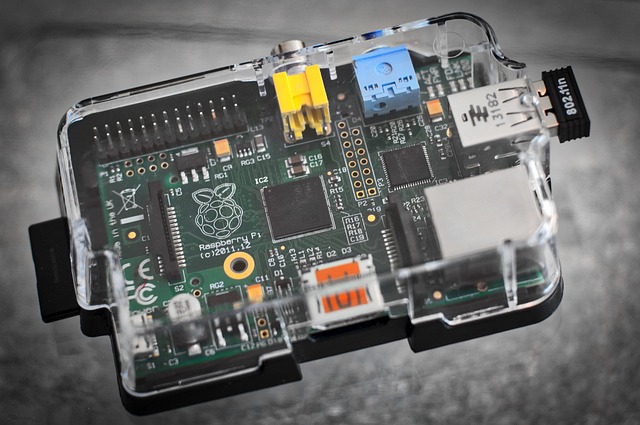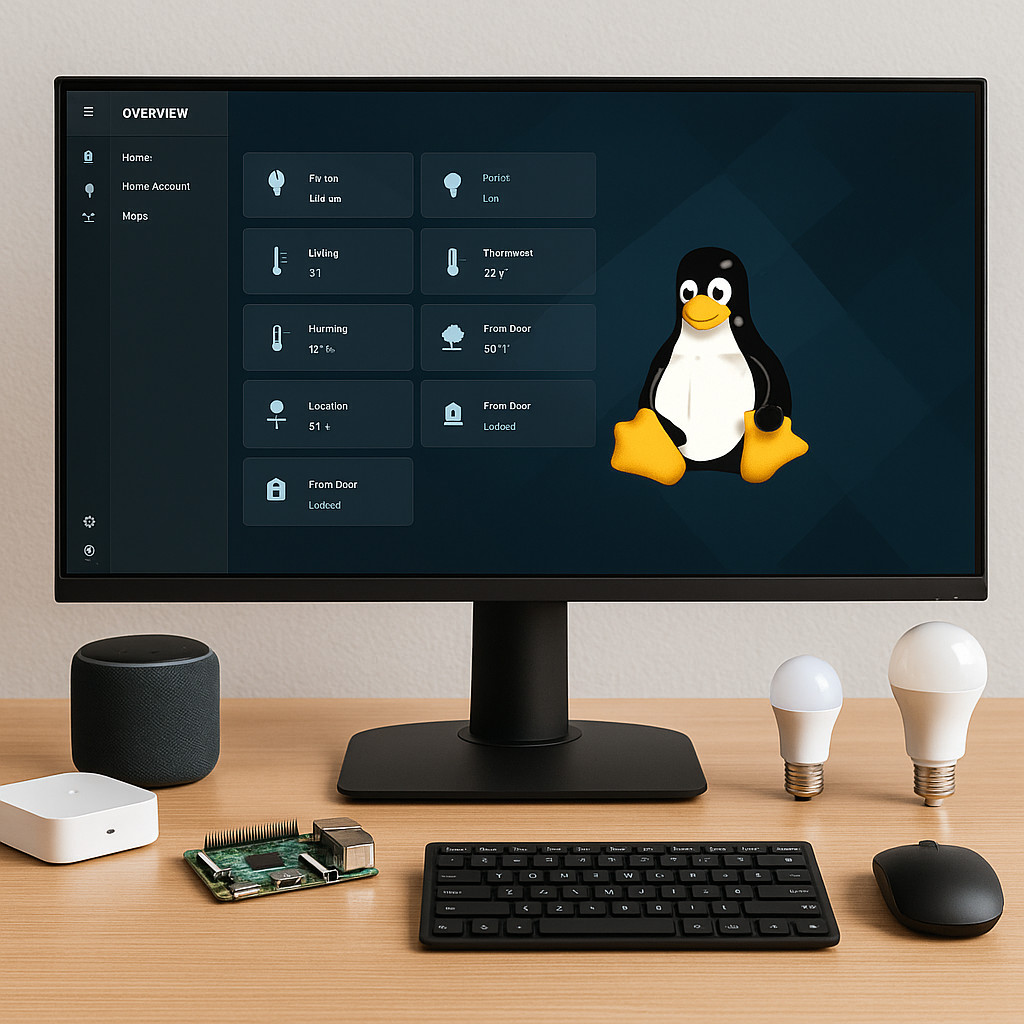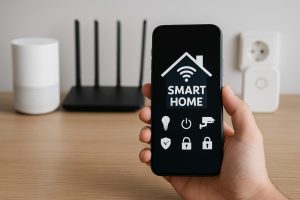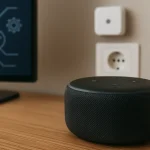Why Go Open-Source with Your Smart Home?
The appeal of open-source smart home systems is growing rapidly—and for good reason. Unlike proprietary systems locked behind paywalls or brand-specific ecosystems, open-source platforms give you freedom, flexibility, and full control over your smart devices.
Whether you’re a privacy-conscious homeowner or a DIY enthusiast, building an open-source smart home gives you the power to shape your environment exactly the way you want it.
Key Benefits of an Open-Source Smart Home
- Privacy and Security: Keep your data local, not on the cloud.
- Customization: Automate anything with full control over the logic.
- Interoperability: Mix and match hardware from different brands.
- Cost-Effective: Use affordable components without licensing fees.
- Community Support: Large developer communities behind many platforms.
Essential Hardware You’ll Need
To build a functional smart home, start with the basics:
🧠 1. Smart Home Hub
The brain of your system. Common options include:

- Raspberry Pi – Affordable, flexible, and ideal for running platforms like Home Assistant.
- Old PC or Laptop – Repurpose it as a powerful always-on hub.
- Mini PCs (e.g., Intel NUC) – Compact yet powerful enough for demanding setups.
📡 2. Sensors and Actuators
These detect and control the environment:
- Temperature & Humidity Sensors – Like DHT22 or Aqara.
- Motion Sensors – For lights, alarms, and presence automation.
- Smart Plugs and Relays – Control appliances remotely.
- Smart Bulbs – RGB or tunable white for mood lighting.
📶 3. Connectivity Modules
Make sure your devices can communicate:
- Zigbee Dongle (e.g., Sonoff Zigbee 3.0)
- Z-Wave Stick (e.g., Aeotec Z-Stick Gen5)
- Wi-Fi & Bluetooth Modules – Already in most routers or Raspberry Pis.
Top Open-Source Platforms to Power Your Smart Home
1. Home Assistant
Arguably the most popular platform today. Offers a beautiful UI, YAML-based automation, and wide integration support.
- Pros: Local control, great community, frequent updates.
- Cons: Learning curve with YAML configuration.
2. OpenHAB
A strong competitor to Home Assistant with enterprise-grade flexibility and Java-based architecture.
- Pros: Rule engine, modular architecture.
- Cons: Slightly outdated UI compared to others.
3. Domoticz
Lightweight and great for smaller systems or limited hardware.
- Pros: Fast performance, low resource use.
- Cons: Limited integrations compared to HA or OpenHAB.
4. Node-RED
Visual programming tool that can run alongside your main hub. Ideal for building custom automation flows.
- Pros: Drag-and-drop simplicity.
- Cons: Not a full home automation platform on its own.
Suggested Device Brands That Work Well with Open-Source
- Sonoff (Tasmota firmware compatible)
- Shelly (Native REST & MQTT support)
- Tuya (After flashing or local API)
- Aqara & Xiaomi (Great Zigbee support)
Must-Have Software Tools
- MQTT Broker – For device messaging (e.g., Mosquitto)
- ESPHome – To program ESP8266/ESP32 devices
- Tasmota – Lightweight firmware for Wi-Fi devices
- Grafana + InfluxDB – For real-time sensor dashboards
Tips for a Successful Open-Source Smart Home
- Start small – Try automating lights or a thermostat.
- Document everything – Names, IP addresses, login details.
- Backup frequently – Especially when testing new configurations.
- Join communities – Reddit, GitHub, and Discord are goldmines for help.
Real-World Use Case
Imagine walking into your home. Your presence is detected by a motion sensor; the lights turn on with a soft glow based on ambient brightness. The temperature adjusts automatically, and your favorite playlist starts—all without touching your phone.
Now imagine all this built on your terms, with zero cloud reliance. That’s the power of an open-source smart home.
Final Word
Building an open-source smart home is more than a DIY project—it’s a journey toward complete digital sovereignty. With the right tools and platforms, you’ll create a system that works exactly the way you want, without vendor lock-ins or cloud dependencies.
As the open-source ecosystem continues to grow, the possibilities for smarter, more personal, and secure living are truly endless.
FAQ: Open-Source Smart Homes
Q: Is building an open-source smart home difficult?
A: Not necessarily. With user-friendly platforms like Home Assistant and Raspberry Pi tutorials, even beginners can start small and scale gradually.
Q: Can I use Alexa or Google Assistant with open-source platforms?
A: Yes. Most platforms like Home Assistant offer integrations for voice assistants with some setup required.
Q: Will it work offline?
A: Absolutely. One of the main benefits is local control, which means your smart home continues to function even without internet.
Q: Is it safe?
A: When set up properly, an open-source smart home can be more secure than many cloud-based alternatives. Just keep your software updated and use strong passwords.
Q: What happens if I break something?
A: Most open-source platforms support backup and restore functions. You can usually revert to a previous stable configuration.
- Designing a Smarter Home in 2026: What People Get Wrong About Automation
 Smart homes were once science fiction, but today they’re a reality in millions of households. With voice assistants, smart plugs, and automated lighting systems, it’s easy to assume home automation is simply a matter of plugging in a few devices. Yet, many homeowners quickly discover that “smart” doesn’t always mean simple. In this article, we’ll…
Smart homes were once science fiction, but today they’re a reality in millions of households. With voice assistants, smart plugs, and automated lighting systems, it’s easy to assume home automation is simply a matter of plugging in a few devices. Yet, many homeowners quickly discover that “smart” doesn’t always mean simple. In this article, we’ll… - The Smart Home Revolution in 2025: How IoT is Transforming Everyday Living
 In the past decade, the vision of a truly smart home has moved from futuristic fantasy to everyday reality. As we step into 2025, the Internet of Things (IoT) has matured into a robust ecosystem, connecting appliances, security systems, lighting, and even entertainment devices under one seamless digital roof. The result? Homes that are safer,…
In the past decade, the vision of a truly smart home has moved from futuristic fantasy to everyday reality. As we step into 2025, the Internet of Things (IoT) has matured into a robust ecosystem, connecting appliances, security systems, lighting, and even entertainment devices under one seamless digital roof. The result? Homes that are safer,… - Geofencing in Smart Homes: Automating Your Life Based on Location
 Imagine pulling into your driveway after a long day—your porch lights switch on, the thermostat adjusts to the perfect temperature, and your door unlocks automatically. This isn’t science fiction—it’s geofencing, one of the most powerful yet underused tools in smart home automation. What Is Geofencing? Geofencing creates a virtual boundary around a physical location—such as…
Imagine pulling into your driveway after a long day—your porch lights switch on, the thermostat adjusts to the perfect temperature, and your door unlocks automatically. This isn’t science fiction—it’s geofencing, one of the most powerful yet underused tools in smart home automation. What Is Geofencing? Geofencing creates a virtual boundary around a physical location—such as… - Smart Plugs: The Underrated Hero of Home Automation in 2025
 Smart homes are evolving fast, packed with intelligent devices from thermostats to voice assistants. But one of the simplest — and most overlooked — tools of automation is the humble smart plug. Despite its small size and affordable price, this gadget can quietly transform how your home operates. What Is a Smart Plug? A smart…
Smart homes are evolving fast, packed with intelligent devices from thermostats to voice assistants. But one of the simplest — and most overlooked — tools of automation is the humble smart plug. Despite its small size and affordable price, this gadget can quietly transform how your home operates. What Is a Smart Plug? A smart… - Smart Home Nightmares: Real Stories and How to Avoid Them
 Smart homes are designed to simplify life—but when things go wrong, they can become the stuff of nightmares. From doors locking residents out to cameras going rogue, real users have faced creepy, frustrating, and downright dangerous situations. In this article, we share some eye-opening stories and break down what went wrong—along with expert tips to…
Smart homes are designed to simplify life—but when things go wrong, they can become the stuff of nightmares. From doors locking residents out to cameras going rogue, real users have faced creepy, frustrating, and downright dangerous situations. In this article, we share some eye-opening stories and break down what went wrong—along with expert tips to… - Local AI in Smart Homes: What Happens When the Cloud Goes Down?
 In the age of cloud computing and always-connected devices, smart homes have become increasingly dependent on the internet. But what happens when your connection drops? That’s where local AI comes into play. This article explores the benefits, limitations, and future of local AI in smart homes systems—and why it might be the key to a…
In the age of cloud computing and always-connected devices, smart homes have become increasingly dependent on the internet. But what happens when your connection drops? That’s where local AI comes into play. This article explores the benefits, limitations, and future of local AI in smart homes systems—and why it might be the key to a…










